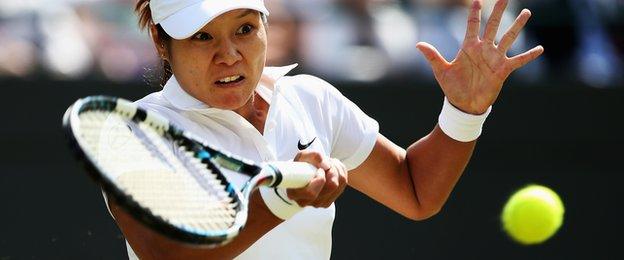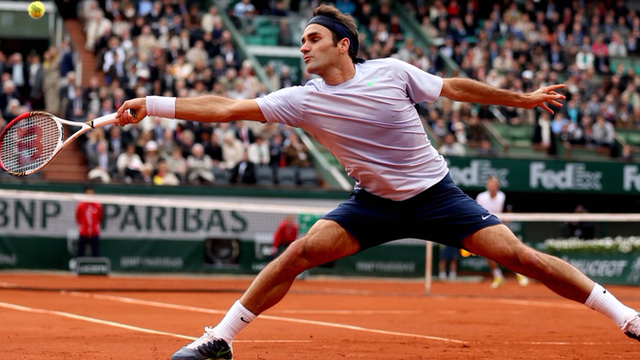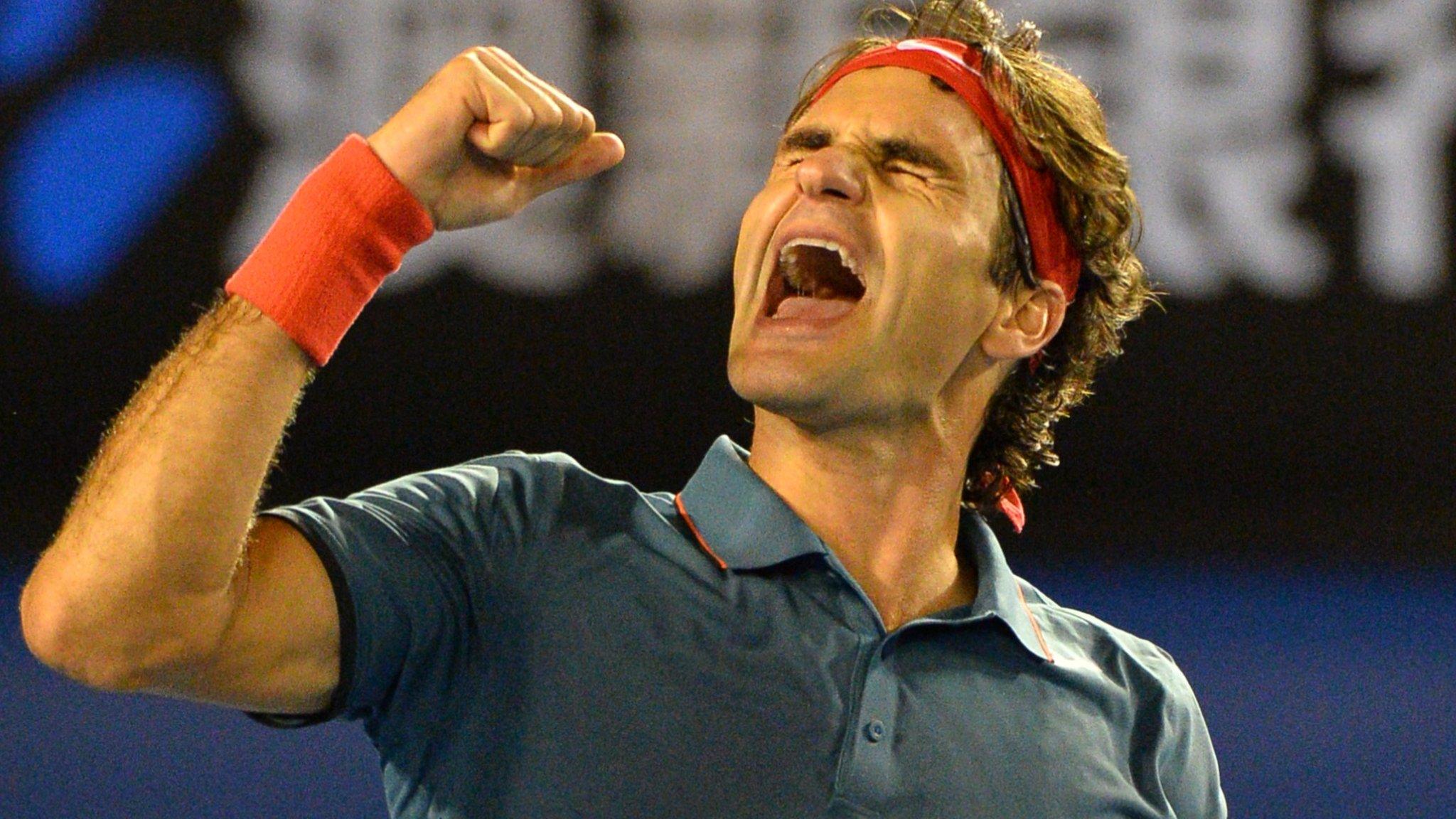Serving for Success: The Perfect Tournament
- Published
Serving for success: The perfect tournament
Tennis tournaments do not have an easy time keeping everyone happy.
There are 256 players involved in the main draw of the singles events at Grand Slams, not to mention those competing in the doubles.
The task is no less complicated at smaller tour events away from the tennis majors.
But some have aced it, including the men's Shanghai Masters, which has been named Masters 1000 tournament of the year five years in a row.
The October event has been running since 2009 and is the showstopper on the three-week Asian leg of the Association of Tennis Professionals (ATP) men's tour.
"When you run an event it's like a little town," says Charles Humphrey Smith, who was instrumental in bringing top-level tennis to Shanghai.
"You have medical, fire and police, all the fundamental services people need.
"If a player needs a patch sewn on his shirt you need a laundry on site. If there are dietary requirements you need certain chefs on site.
"You've got to get the facilities and the infrastructure in place. We say it's a bit like an onion - you've got to work from the core and then layer out."
Good facilities
The core of any successful tennis tournament is the ability to keep the players happy.
The four Grand Slams - the Australian Open, French Open, Wimbledon and US Open - are the cornerstones of the sport's crammed calendar.
Then there are eight mandatory events for the top-30 ranked male players and 10 for the top-10 females.
The other tournaments on the peripatetic tennis tour must work hard to attract the top talent.
Getting the basics right, with a dash of pizzazz, is important for most players.
"Good food, good ambience, good music, good fun," lists Latvian top-20 star Ernest Gulbis.
"Tennis players like good facilities," says Dutch number one Robin Haase. "If we have a good gym and good rooms that makes us play better."
.jpg)
The Australian Open is known as the "Happy Slam" because of the atmosphere
Food is 'top priority'
Some tennis players aren't afraid to voice their dissatisfaction, something that has become even easier in today's social media world.
Haase famously complained about what he felt were dirty conditions in Casablanca two years ago.
This year, while in Washington, former top-five Croatian Ivan Ljubicic - now the coach of big-serving Canadian Milos Raonic - didn't appear to be best pleased with the food on offer.
"Note to all TD's," he began on Twitter, referring to tournament directors,
"Quality of food is the most important thing for players. Top priority. Formula One can't run on diesel."
Like most top athletes - including F1 drivers - tennis players must stick to a carefully controlled diet and exercise regime as part of their precise physical preparations.
John Lloyd, a British Grand Slam finalist in the 1970s, recalled wolfing down steak and chips before a match, but those days are long gone.
"Players eat a lot cleaner than they used to," says Matt Little, strength and conditioning coach for 2013 Wimbledon winner Andy Murray.
"Fruit, vegetables, rice and lean meat are all key aspects of a player's diet and almost every player on tour takes their diet incredibly seriously.
"Most high-level tournaments have a pretty good gym available and that's also massive for the players."
Happy slam
If tournaments can dish up enough delights to attract the big names - possibly sweetened by sponsorship deals - then the crowds will come too, and that in turn is a major boost for the players.
"I love playing in big stadiums when a lot of fans show up, it's good motivation," Japan's US Open finalist Kei Nishikori tells the BBC.
"It's always fun to play in Asia. It's home for me, so I always enjoy the Japan Open and the Shanghai Masters."
The Australian Open - dubbed the "Happy Slam" - seems to have mastered the art of ambience.
"I'm fortunate to have a Grand Slam in my own country," says Australia's two-time Grand Slam winner Lleyton Hewitt.
"I get a lot of support there and I enjoy playing all the smaller tournaments in Australia as well."
Many tournaments try to make things more interesting for the fans too because, after all, ticket sales help boost profits.
Autograph sessions on the grounds have become universally popular but Smith argues one of the attractions of the global tennis tour is that each event has its own cultural flavour.
"The crowds are amazing in Australia, dressing up and so loud but in the Middle East, for example, they are a little quiet and restrained," Smith says.
"Every market has its own character and that is why tennis transforms across borders and reflects the diversity of the world."
Tournament directors have to look after the players and fans while also watching the bottom line.
Most organizers do not boast limitless funds and the recent economic slump in many parts of the world has affected sponsorship.
It's one of the reasons why Hawk-Eye - the ball tracking technology that has become hugely popular among players and fans alike - isn't used at every event.
"Most tournaments normally cost 80-90% of revenue just to stage the event," says Smith, who is also an ATP board member.
"Tournaments can be profitable, but some are and some aren't."

Last month China's Li Na announced her retirement from tennis at the age of 32, citing injury problems
Asia expansion
Investing in events like the Shanghai Masters, which employs as many as 5,000 staff, can also amount to an investment in the future of the game.
The success of the event is one of the reasons - along with Australian and French Open winner Li Na's Grand Slam breakthrough in the women's game - tennis is developing in China.
A second event in Shenzen has been added to the Asian swing of the men's 2014 tour while Na's hometown of Wuhan is also staging an inaugural event on the women's calendar.
"At most tournaments, the crowd demographic is a little older, 35-plus, but in Asia and certainly China it's a very young demographic," says Smith.
"Young people are picking up on tennis and playing it too - that will change the game in Asia too.
"Kei Nishikori has brought tennis strength back to Japan and Li Na broke the barrier in China.
"It's not a matter of if, but when Asia has more top tennis players."
The success of a tennis tournament cannot only be measured by today's standards; it is also judged on how it adds value for the next generation of fans and players too.
Reporting by Sarah Holt and Ravi Ubha
- Published25 September 2014

- Published30 September 2014

- Published13 October 2014
